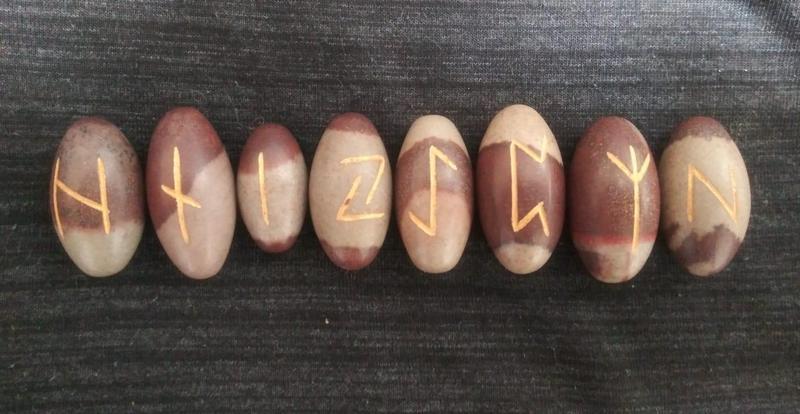Heimdall's Aett
Heimdall's Aett
Heimdall’s Aett
HAGALAZ – phonetic H, representing inclement weather, a storm. One bemoans skies of dark clouds, and the torrential downpour of rain, snow, hail, etc which often ensues, however, one cannot avert the course of weather patterns, and so are completely at the mercy of of nature’s indifferent cruelty. Despite such negative connotations, one must remember that the same precipitation which they might dread is also a key factor in growth and organic processes, and that their discomfort is not the intent of the rain, but merely an unfortunate side effect. This is the place where the Jotnar dwell – Jotunheim.
NAUTHIZ – phonetic N, representing poverty, the bare minimum for survival. Some have likened this Rune in its appearance to sticks being rubbed together in order to start a fire, thus it has been described as “need-fire”. Nauthiz lacks frills, being only what is truly needed to get by, and in the modern era of excess, it’s easy to think of pure necessity as “lacking” or otherwise deficient, but thousands of years ago, existence was considerably more harsh, and one often thanked their gods for something so trivial as a warm fire or a bit of food. If one has what one needs, it is hardly “poverty”.
ISA – phonetic I, representing ice, standstill, an imposed rest. Ice is quite literally water or another liquid which has been slowed down to the point of relative stillness, thus solidification. It is also worth noting, as certain others have, that water, when frozen into ice, floats to the surface, and so Isa can also be the manifestation of something which originated in the fluid depths, but has been solidified or “frozen” into a real form, and thus it has transitioned from the realm of concept to that of actuality.
JERA – phonetic J/Y, representing harvest, year. Quite literally a pair of sickles reaping what is sown, the harvest which is gathered after much planning and hard work – or the lack thereof. Supplementary understanding of mythology and other esoteric systems, such as astrology, lead one to equate Jera with Saturn, who is regarded as lord of time, harvest, and consequences, and who is as benevolent – or as cruel – as one’s own actions dictate.
EIHWAZ – phonetic EI, representing alchemy, sorcery, the transition from one phase to another. Evocative of the tarot’s Death card, Eihwaz is the yew tree, continually moving through stages, growing, dying, and rebirthing itself from its previous iterations. Having much more occult associations, it could be argued that Eihwaz is equally as much the Wotan rune as Ansuz, and it reveals a great deal of insight into how one would apply what is often called “witchcraft” in a practical manner, which is not to be thought of as spontaneous manifestation, but as guided phase changes to achieve a desired result.
PERTHRA – phonetic P, representing the lot-cup, Wyrd, the yoni. As mentioned in the previous article, I have removed the blank rune which came with my set, as Perthra already fills the role of being the chaotic tangle of the threads of fate or “Wyrd”. When one rolls dice, the result is assumed to be “random”. However, there are many subtle factors present in dice rolling, and hypothetically, if one could identify and control these factors, they could exert a reasonable amount of control over the outcome. The Chaos of data present in all things is not random, indeed, nothing is, rather, it is an order so complex that it is beyond normal human capacity to perceive, let alone control.
ALGIZ - phonetic Z, representing sacredness, protection, life. Various sources describe it as both an individual with his arms raised, which evokes imagery of a priest or one who is otherwise enraptured, and as the antlers of an elk, which are its primary means of defense. Algiz implies a sort of active defense, and not the passive sort as implied by a wall or shield, and it makes a clear statement that what is under its protection is sacred, a claim which is assured to be substantiated if the threat persists.
SOWILO – phonetic S, representing a bolt of lightning, the sun, both of which are matter in a highly energetic plasma state, and the opposite of Isa’s frozen stillness. Sowilo is quick and powerful, whereas Isa is motionless, Sowilo is dynamic, ever moving and brimming with energy, almost to the point of appearing impulsive. As with the hammer wielded by the thunder god, Thor, Sowilo is both a potent creator – and a destroyer.
Be the first to post a message!
